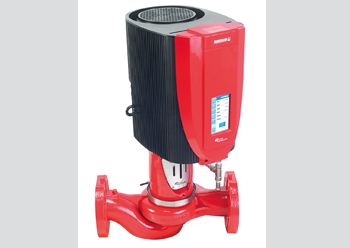Technology key to optimise consumption
Embracing new technologies that enhance sustainable water management can have a major impact on water consumption and building operation costs, says KEVIN LAIDLER, MEA Sales Director – Armstrong Fluid Technology*.
01 October 2021
The world is currently facing a significant challenge: water stress. This is because water is deeply linked to human existence and plays an important role in the sustainability of our planet. However, the way we currently consume water in our cities is often wasteful.
This overconsumption is amplified by the fact that millions of people in developing countries still lack access to safe and clean water sources. The UAE has one of the world’s highest per capita water consumption figures in the world – around 550 litres per day.
Evidently, there are issues with how we consume this precious resource. Our current overconsumption not only deprives those who need these resources most, but is also an irresponsible way of life that results in a higher carbon footprint and higher costs.
Fortunately, water technology is transforming the way we consume water in the built environment. For example, water-efficiency technology in buildings can reduce the energy consumption for water heating by 25 per cent, leading to lower costs and energy bills.
One challenge we face with water and HVAC (heating, ventilation and air-conditioning) systems in the region is loss of energy efficiency in our buildings. Over time, component efficiency of our systems drifts away from the originally installed operating curve, causing their performance to degrade incrementally. This ‘performance drift’ is intensified by the way buildings in the region are often constructed.
Over the years, construction has focused on timelines rather than energy or water efficiency, resulting in poorly run buildings with high operating costs.
Energy is a costly commodity, representing an average of 25 per cent of all operating costs in office buildings. However, costs can be substantially reduced through a combination of modified consumption habits and optimisation of HVAC and water systems.
But how are water and energy linked?
Producing energy uses water, and delivering freshwater uses energy. In most power plants, water is used to cool the steam that spins the electricity-generating turbines. Refining transportation fuels requires water, as does producing fuels. As much as 44 per cent of total global water withdrawals are used for energy production, a dominant share of which is cooling water in thermoelectric energy generation.
To combat the many water-related challenges we face, the water sector is increasingly embracing new technologies. One such technology involves integrating digital capabilities to support performance management. One of the main reasons most buildings are wasting water and energy is because they operate below their optimal efficiency. Building operators lack the tools to evaluate data from water systems, or even worse, they don’t have access to the data at all. Without this, building operators cannot properly optimise their systems. The unfortunate consequences include resource wastage, insufficient maintenance practices, energy waste, increased emissions and high costs.
Active Performance Management (APM) involves using intelligent solutions to learn, predict and optimise our water and HVAC systems. APM software delivers real-time insights that enable informed decisions and deep learnings for system optimisation.
Choosing the right intelligent systems is key to successful performance management. Armstrong’s Pump Manager Active Performance Management software integrates technologies built into its pumps, together with a cloud-based software, to provide analytics. It uses real-time flow data, direct from water pumps, to reveal important insights about operation and efficiency. This data can be leveraged to inform equipment optimisation as well as provide alerts for any potential issues before they become severe. The data can also help inform correct sizing of larger equipment for energy upgrade projects
Furthermore, the type of pump itself can have a great impact in improving system efficiency. Armstrong’s Design Envelope Pumps optimise system performance and respond to real-time system conditions through variable speed control and parallel sensorless pumping, dynamically adjusting equipment operation to match system demand. This ensures resources are consumed on a demand-only basis to reduce waste and costs.
In the last decade, the technology for water and HVAC pumps has been significantly improved to provide energy efficiency savings of up to 70 per cent, through demand-based control and innovative pumping technology.
The role of our buildings has changed. Increasingly, sustainability, health and wellbeing are placed at the core of construction to create more resilient spaces that support vibrant, modern human lifestyles. As water is such an important part of our daily lives, efficient water management plays a vital role in supporting these spaces.
By embracing new technologies that enhance more sustainable water management, we are able to create safer and stronger spaces that deliver savings.
Sources:
https://www.ucsusa.org/resources/energy-and-water-use
https://www.sciencedirect.com/science/article/pii/S0048969718339184
* Armstrong Fluid Technology is a leader and innovator in the design, engineering and manufacturing of intelligent fluid-flow equipment.
- Metito takes on 22-month challenge
- Technology key to optimise consumption
- Less energy-intensive RO tech gains ground



